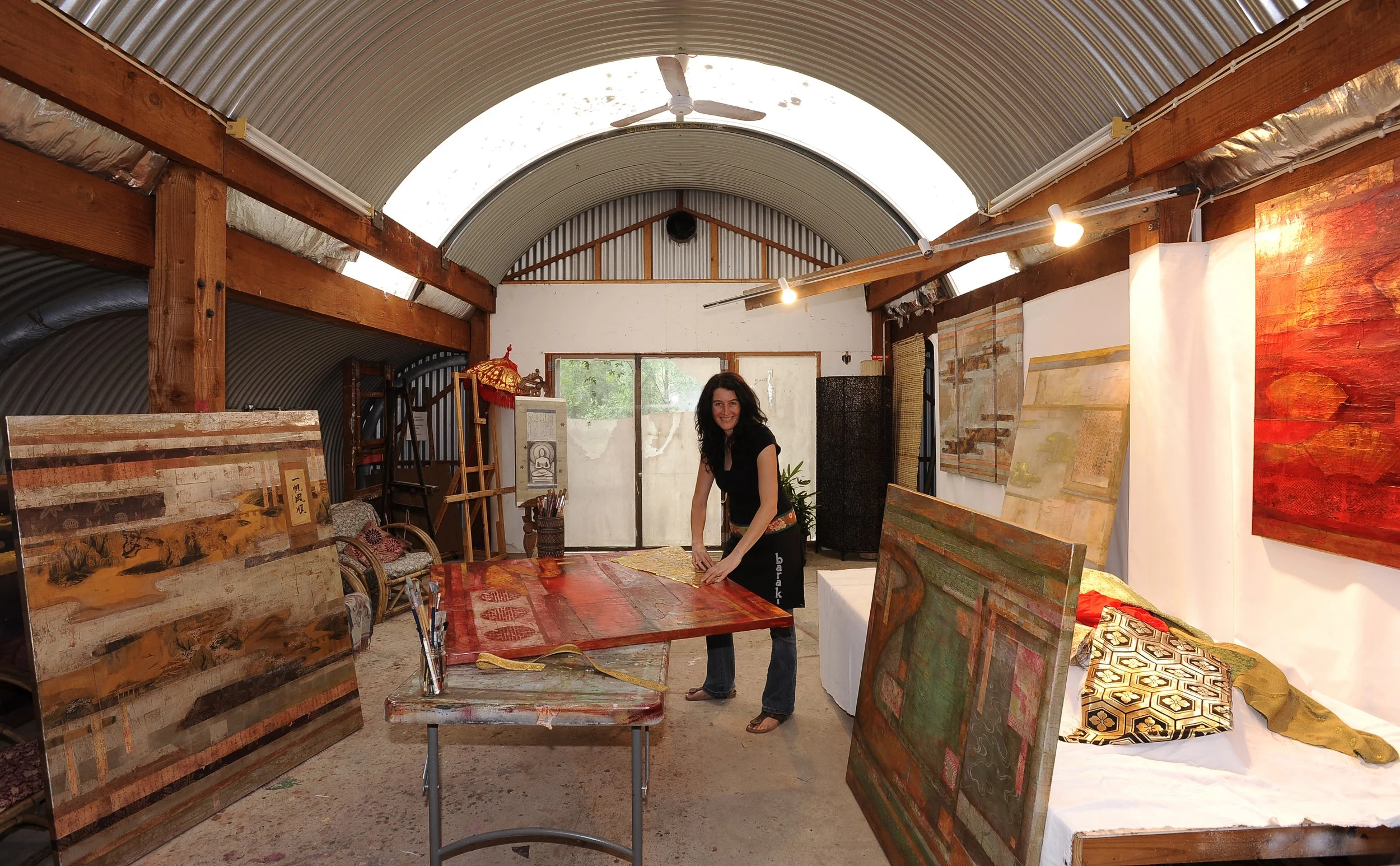Latest Posts

Liminal Horizons - Final Week
With a career spanning more than 30 years and exhibitions across Australia and internationally, Lascelles’ work has found homes in collections around the world. Liminal Horizons extends her long-standing exploration of transformation, continuity, and inner stillness. It offers viewers a contemplative passage — a place to stand inside uncertainty, to witness the dissolution of the familiar, and to sense, however faintly, the emerging shape of what comes next.

Liminal Horizons
In Liminal Horizons, Australian artist Nerina Lascelles presents luminous mixed-media paintings exploring the threshold between worlds. Inspired by Shanshui tradition and Australian landscapes, these works evoke transformation, timeless stillness, and the uncovering of hidden wisdom.

Final Artist’s Open Studio
After fifteen inspiring years and thirty events, artist Nerina Lascelles announces her final participation in the Nillumbik Artists Open Studios program. Reflecting on deep connections, creative exchange, and her evolving artistic path.

Qdos Exhibition
The artwork of Nerina Lascelles invites viewers to reach beyond wave forms and cloud forms and ranges of mist obscured mountains, beyond rocky summits, precipitous slopes and shadowy ravines, toward depths of field within which a spacious luminescence holds sway.

Exhibition Opening
An enormous thank you to everyone who travelled from near and far to attend the opening of my solo exhibition at Qdos in Lorne on Sunday.


UPCOMING EXHIBITION
I am thrilled to announce that my first solo exhibition at the stunning Qdos in Lorne opens on Sunday 1st December, 2024


"Warrandyte Wonder"
I was recently invited to a local primary school to be interviewed by the students on ‘life as an artist’ for an in-house newspaper titled, “Warrandyte Wonder”

THE OPEN SPACE
The Open Space describes the formless dimension that precedes all matter. The emptiness or void from which all possibilities are held. In Buddhism, emptiness is the ultimate nature of reality, empty of inherent, independent existence

Exhibition Opening
Heartfelt gratitude to all of you wonderful people who came out to help celebrate the launch of The Open Space on the weekend. Still smiling after such a magical day

"The Open Space"
The Open Space describes the formless dimension that precedes all form…. Exhibition Essay by Dr Ewen Jarvis



"TIME FOR AN ART ESCAPE"
AFTER MORE THAN 18 months cloistered in their studios, Nillumbik’s artists are delighted to have been able to open their doors once more

Dadirri - Deep Listening
As is the case across the globe with restricted travel and multiple local 'Lockdowns', the new reality we have no alternative than to embrace and reconnect with our local area. This also reflects in my artwork


21 Days in My Art World
This year I finally have the time and space to join the Instagram challenge, ‘21 Days In My Art World’

Art Studio Construction
The Owner Builder magazine published an article describing the building process of my art studio.

Transcend - A Word from the Artist
To transcend, is to go beyond, to rise above, or to become something more.